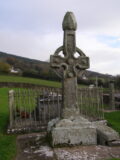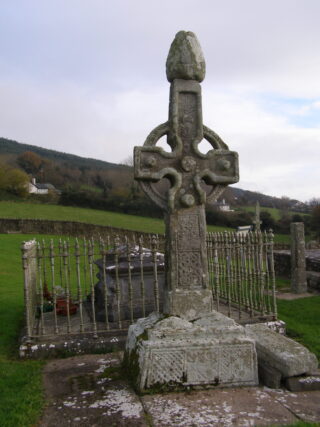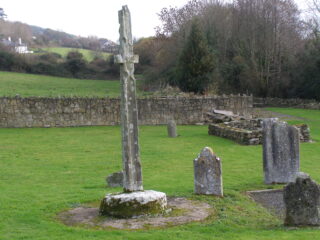Fógra
WARNING: It should be noted that these sites are unguided and a level of care and caution should be maintained during all stages of your visit. The Office Of Public Works (OPW) will not be held responsible for any damages, injuries, or losses that occur
Kilkieran High Crosses
Within the medieval church and graveyard of Kilkieran, on the site of an early medieval monastery, are the Kilkieran High Crosses. These high crosses form part of a group of high crosses identified within the kingdom of Lismore. The other areas are Ahenny, Tibberaghny, Killamery and Kilree – collectively known as the Ossory Group. In early medieval Ireland, the Kingdom of Ossory was a powerful buffer state between the Laigin to the north and Eoganacht to the west. The Kingdom of Ossory was home to the Osraige people ruled by the Dál Birn, from the 1st The 12th century Anglo-Norman invasion put an end to the Osraige rule. Gilla Patráic mac Donnchada was king of Osraige from 976 to 996 and his descendants went by the name of Mac Giolla Phádraig of Ossory (Son of the Devotee of St. Patrick), also known as Fitzpatrick. Bernard Fitzpatrick, 2nd Baron of Castletown and Upper Ossory, husband to Clare St. Leger of Doneraile Court, is known even after his death in 1937 as Mac Giolla Phádraig.
The West High Cross is carved from sandstone and has a flat-topped beehive-shaped capstone. Thick rope-moulding adorn this cross, as does decorated interlace, spiral motifs, circular marigold motifs, roll-moulding, interlinking spirals and close-mesh interlace. A cross is formed from the arrangement of panels of interlace. Two panels at the east base show four horses and riders.
The Tall High Cross, east of the church, stands in a round undecorated base. Decorated with vertical panels, semi-circular terminals and a St. Andrew’s cross. This high cross is the tallest of this group of high crosses and is unique amongst them being slender with no ring.
The South High Cross, with its flat-topped beehive-shaped capstone is the plainest of this group of high crosses. It has raised flat mouldings with the ring having no moulding. It is the smallest of the high crosses at Kilkieran.
To the south-east is a High Cross shaft, its associated fragmented head is now on display at Jerpoint Abbey. This high cross shaft made of sandstone was re-used as a lintel over the west door, for the Osbornes of Annefield and Kilmacoliver mausoleum, nearby.
The Kilkieran High Crosses are dated to the 8th century.
Visit Historic Environment Viewer for more information on Kilkieran High Crosses
Protect our Past - Click here to read about the importance of protecting our country’s unique heritage sites
This national monument is protected in accordance with the National Monuments Acts 1930 to 2014



